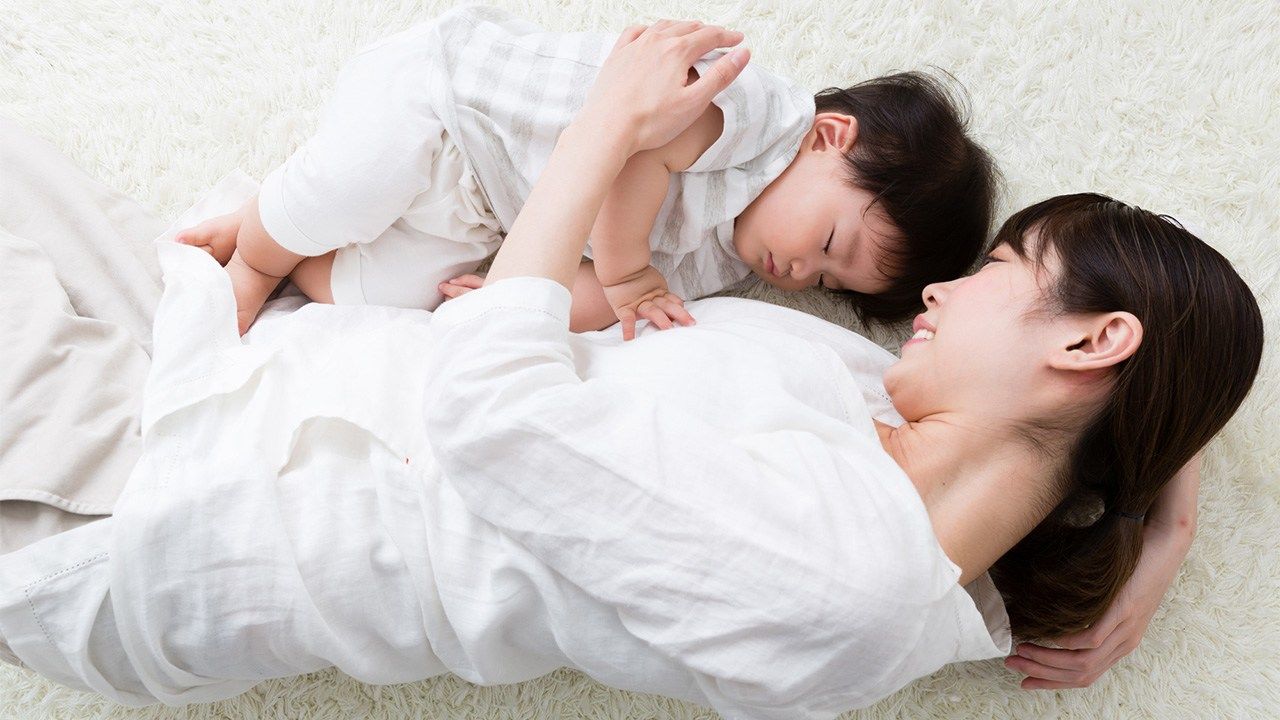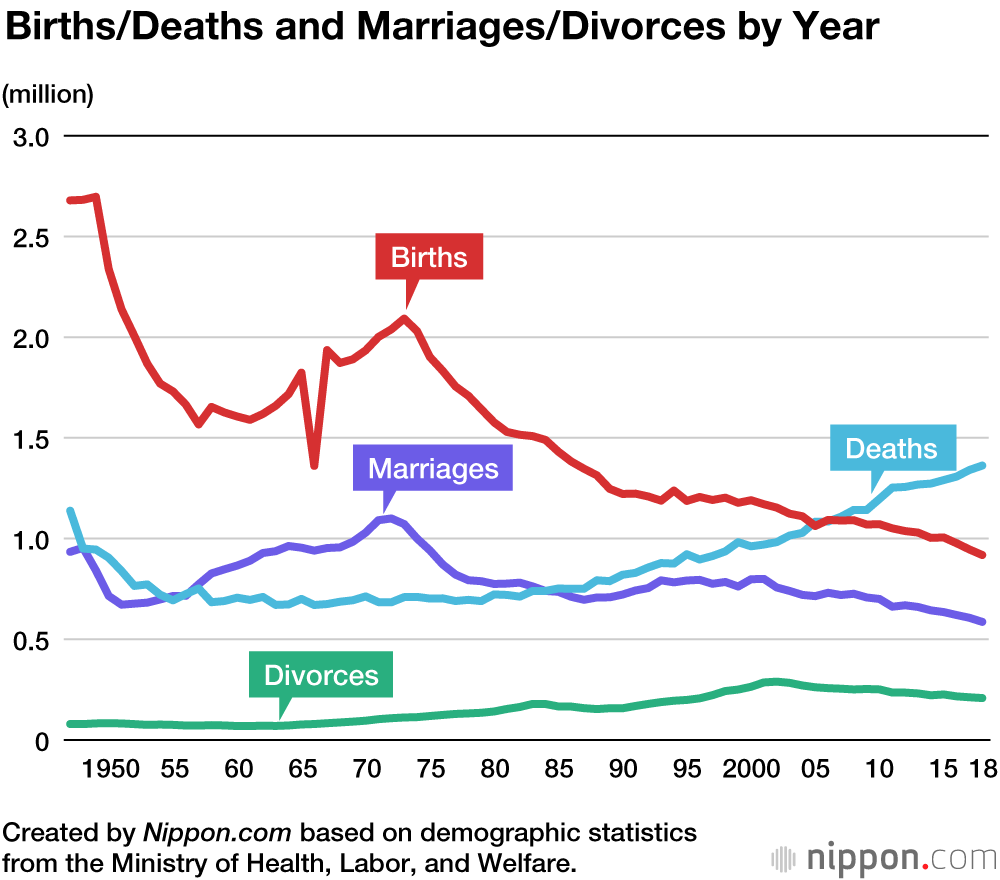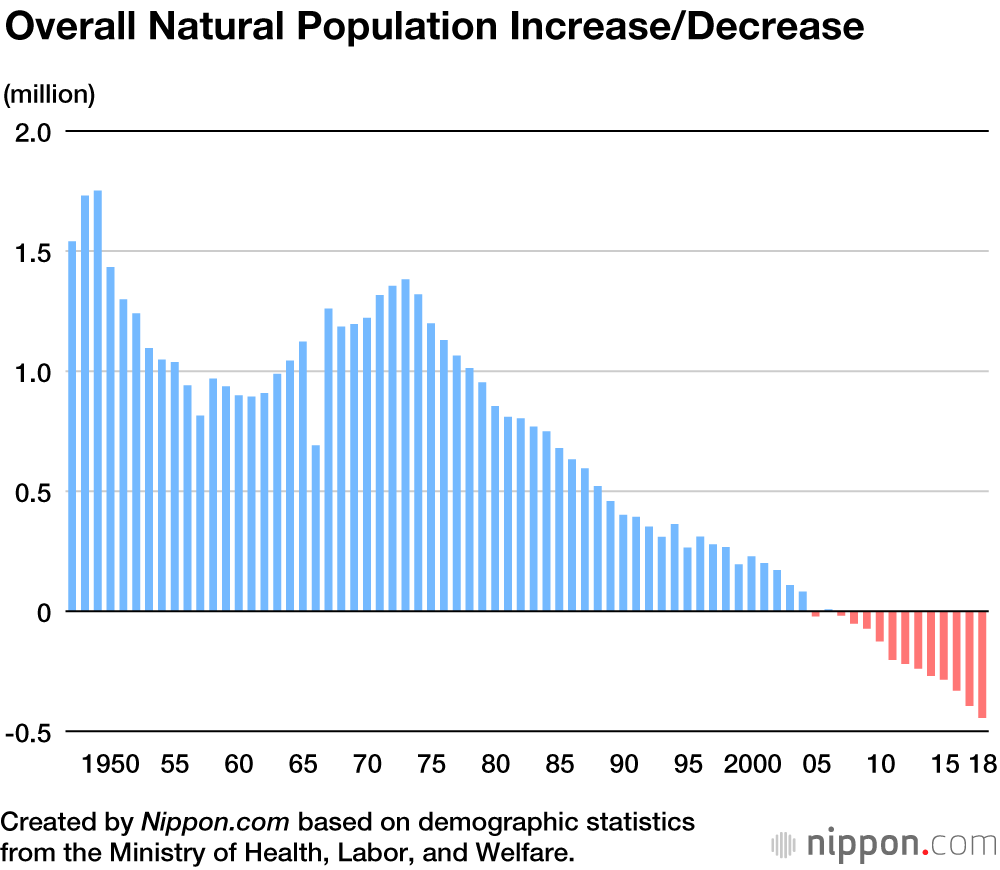
Japanese Population Decline Accelerates as Annual Births Dip Below 920,000 in 2018
Society- English
- 日本語
- 简体字
- 繁體字
- Français
- Español
- العربية
- Русский
The number of annual births in Japan fell year-on-year by 27,688 in 2018, to 918,397. Provisional demographic statistics published by the Ministry of Health, Labor, and Welfare also indicate that the total fertility rate—the average number of children born to each woman during her lifetime—decreased from 1.43 in 2017 to 1.42 in 2018.
Japan’s Demographics
| 2018 estimate | 2017 | 2016 | |
|---|---|---|---|
| Births | 918,397 | 946,065 | 976,978 |
| Total fertility rate | 1.42 | 1.43 | 1.44 |
| Deaths | 1,362,482 | 1,340,397 | 1,307,748 |
| Natural population change | -444,085 | -394,332 | -330,770 |
| Marriages | 586,438 | 606,866 | 620,531 |
| Divorces | 208,333 | 212,262 | 216,798 |
Created by Nippon.com based on demographic statistics from the Ministry of Health, Labor, and Welfare. The natural population change is calculated based on the difference between the number of births and deaths.
As Japan continues to gray, there was a new postwar record for annual deaths at 1,362,482. The natural population decrease of 444,085 was the highest ever drop.
In Japan’s first baby boom (1947–49) there were more than 2.5 million births each year, while the second baby boom (1971–74) saw over 2 million annual births. Since then, however, the number has fallen continuously, slipping below the number of deaths for the first time in 2007. As the children of the second baby boom are now in their late forties and past typical childbearing age, the number of births is expected to continue to drop.
The number of marriages fell by more than 20,000 to 586,438. This corresponds to 4.7 unions per 1,000 people, a new record low in the postwar era.
(Originally published in Japanese on June 14, 2018; figures updated on June 10, 2019. Banner photo © Pixta.)

